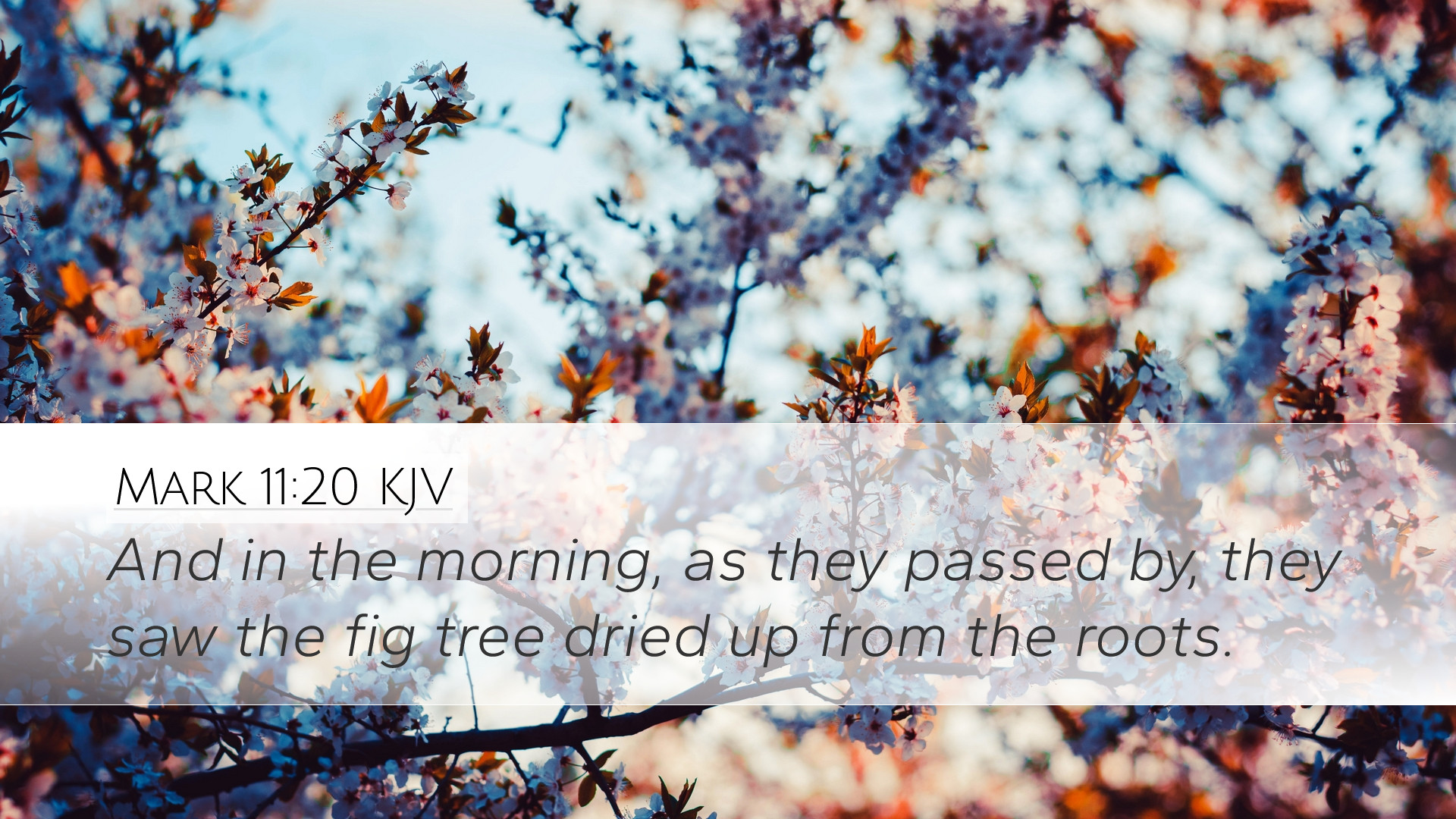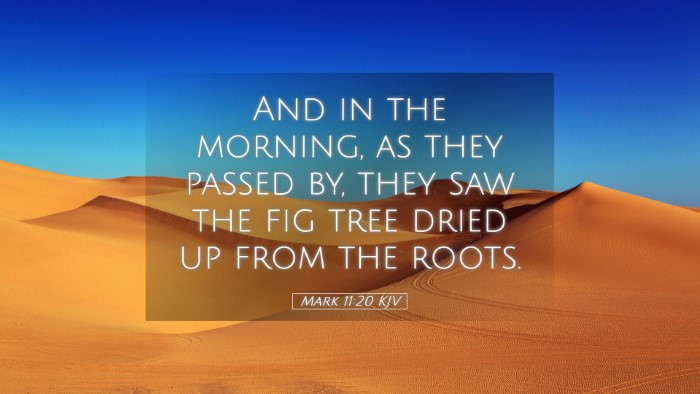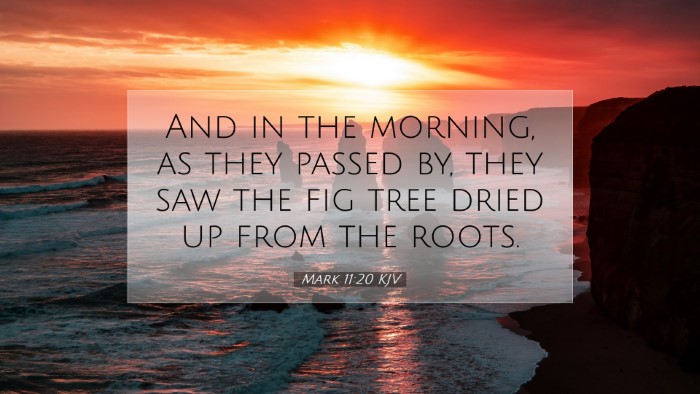Commentary on Mark 11:20
Mark 11:20 states: "And in the morning, as they passed by, they saw the fig tree dried up from the roots." This passage includes profound teaching, essential for a rich understanding of faith and divine authority. The context is vital for scholars, pastors, and anyone studying the implications of Jesus' miracles and teachings.
Context and Background
The events of Mark 11 fall within the final week of Jesus' earthly ministry. His earlier triumphal entry into Jerusalem sets the stage for the confrontation between divine authority and the religious establishment.
Earlier in the chapter (Mark 11:12-14), Jesus had cursed the barren fig tree, symbolizing judgment upon Israel for spiritual barrenness. The withering of the tree signifies an urgent message about faith and obedience to God's will.
Insights from Matthew Henry
Matthew Henry emphasizes the importance of faith as a means to access God's power. His reflection on this verse highlights a few important themes:
- The Example of Christ: Henry notes that Jesus used the fig tree to teach His disciples about the consequences of spiritual barrenness. The withering tree serves as a warning against hypocrisy and encourages self-examination.
- Faith as a Powerful Tool: He expounds upon verses that follow, emphasizing that faith can move mountains. Faith is deemed not just as belief but as active reliance on God's promises and power.
- Judgment and Mercy: Henry suggests that this passage is dual in its message—it reflects both God's judgment on unfruitfulness and His invitation to repentance and new life.
Insights from Albert Barnes
Albert Barnes provides a detailed analysis of the implications of this passage, focusing on the practical applications of the lesson Jesus imparts:
- The Consequences of Spiritual Famine: Barnes interprets the withering of the fig tree as indicative of the fate awaiting those who do not bear good fruit. The tree had the appearance of vitality but produced nothing, illustrating the reality of empty religious practice.
- The Nature of True Faith: He emphasizes that true faith must be coupled with actions that reflect its authenticity. The subsequent verses about asking in prayer bring out the heart of faith's operation—aligning with God's will.
- A Call to Persevere: Barnes exhorts believers to take the lesson seriously, reminding them that faith requires perseverance. The disciples’ query after seeing the dried tree encourages them to deepen their understanding of trust in God.
Insights from Adam Clarke
Adam Clarke approaches this passage with a pastoral lens, applying its truths to everyday believers:
- Symbolism of the Fig Tree: Clarke relates the story back to Old Testament imagery where the fig tree often symbolizes Israel. The withering tree is a symbol of judgment upon a nation that fails in its mission to bear fruit.
- Importance of Prayer and Faith: Clarke extends the interpretation to emphasize the connection between faith and effective prayer. He insists that the withering tree serves to remind believers that God’s responses to prayer are within the framework of His divine character.
- Greater Faith and Potency: He discusses the promise of faith’s potency, noting that believers might similarly be empowered to enact change when their faith is grounded in God’s will.
Theological Implications
This passage not only narrates historical events but also opens discussions on theological themes such as:
- Judgment and Redemption: The fig tree serves as an emblem of judgment, prompting theologians to explore how this intersects with the broader themes of grace and redemption throughout Scripture.
- Faith’s Role in the Believer’s Life: The call to faith mirrors the greater Christian narrative where faith becomes the conduit for experiencing God’s blessings and moving with divine authority.
- The Call to Spiritual Fruitfulness: The imagery aligns with the New Testament's consistent call for believers to exhibit the fruits of the Spirit, affirming that authentic faith is inherently productive.
Conclusion
Mark 11:20, while a simple observation of a dried fig tree, encapsulates profound lessons on faith, judgment, and the character of God. For pastors, students, and theologians, this passage offers rich soil for contemplation and application. It beckons believers to introspect their spiritual vitality and challenges the church to be a beacon of faith and fruitfulness in a world that seeks hope and purpose.


